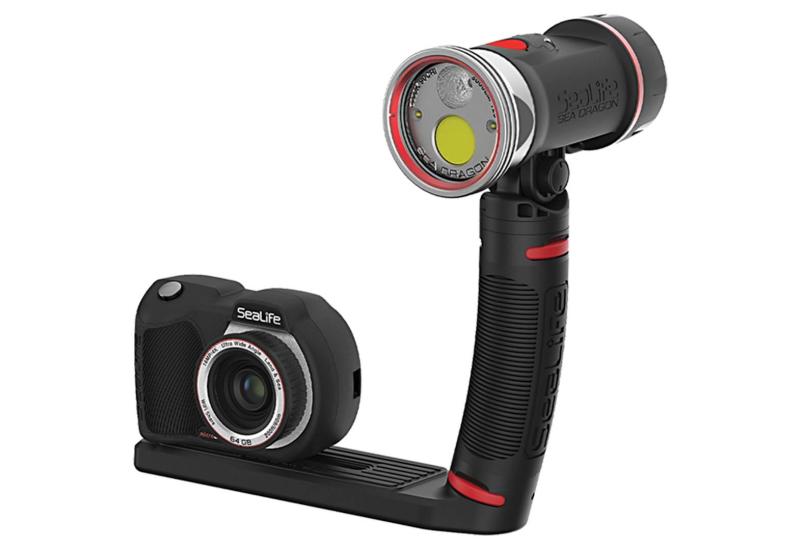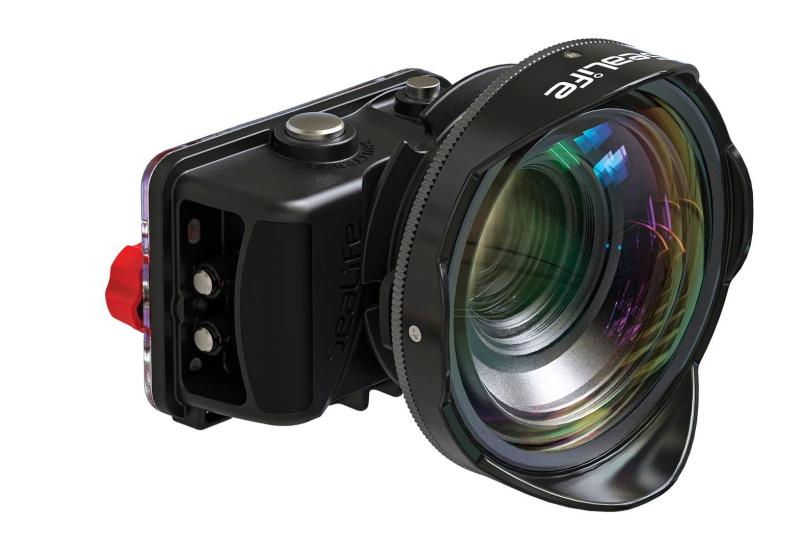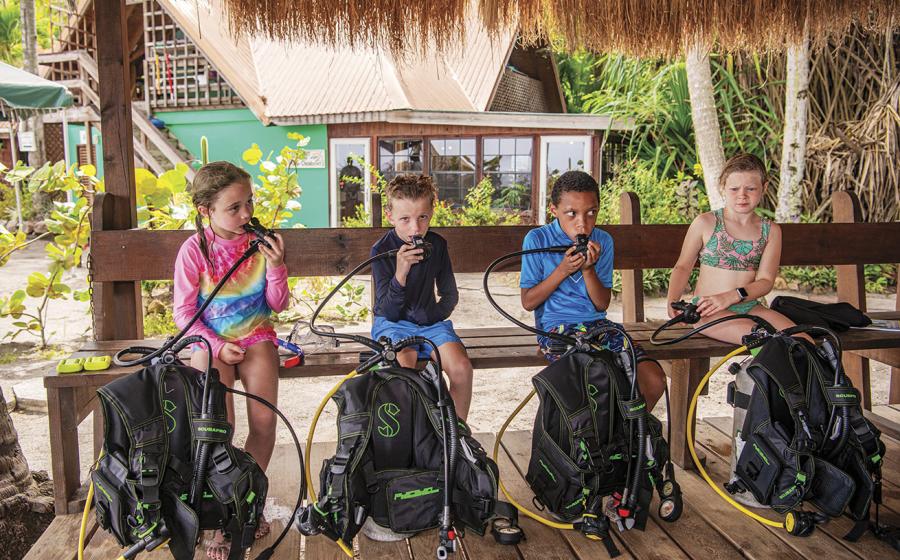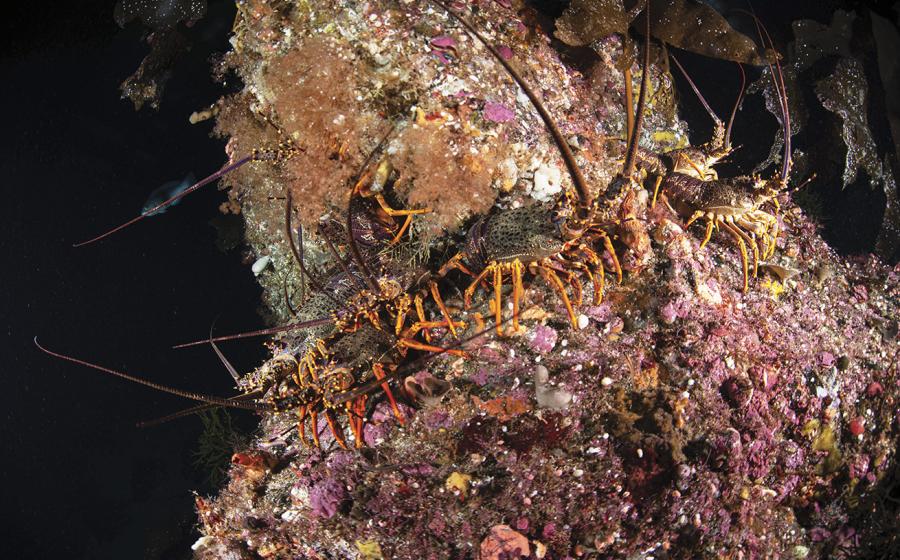ScubaLab: Underwater Camera Systems - Olympus PT-EP01 for the E-PL1

Specifications
| Sensor | 12.3 MP Live MOS |
| Image Size | Large: 4,032x3,024 to 640x480 at lowest resolution |
| Sensitivity | ISO 100-6,400 |
| Image File Formats | JPEG; RAW (12-bit lossless compression); RAW+JPEG |
| Auto Focus | 11-point AF, TTL |
| Exposure Modes | Multiple including Program, Aperture Priority, Shutter Priority, Manual as well as 19 scene modes |
| White Balance | 8 including Lamp, Daylight and Cloudy |
| Weight | 11.8 ounces |
| Monitor | 3-inch, 230,000 pixel HyperCrystal LCD |
| Zoom | 14-42 mm |
| Video Mode | 1280x720 HD or 640x480 SD at 30 fps |
| Special Features | Dust-reduction system, ePortrait mode, perfect-shot preview, shadow-adjustment technology, in-camera music/still/video integration |
| System as Tested | Olympus E-P01 housing, Olympus E-PL1 PEN camera, a 14-42 mm lens, two Olympus UFL-2 strobes |
| Price as Tested | $2,499.99 |
| www.olympus.com |
The Pros Say
The E-PL1 PEN is the first in Olympus’ line of micro four-thirds cameras to have an underwater housing. Micro four-thirds cameras offer professional results and interchangeable lenses at half the size of traditional DSLRs, an important factor with today’s airline baggage restrictions.
The Test Diver Says
As a semi-knowledgeable DSLR user, I was quickly and intuitively able to navigate the menus on this camera system and figure out its various settings. The controls for things like setting the focus priority zones and setting shutter speed and aperture were easily accessible, although frustrating at times. For example, if I wanted to set my aperture, I had to press the up arrow on the keypad, which would then put me in the mode to adjust shutter speed and aperture. I would then have to move left or right to adjust the aperture, but if I didn't do it quickly enough, the menu would time out and kick me back to the start screen, and I’d be adjusting the focus priority instead. It was a minor inconvenience and slightly annoying, but definitely not a deal breaker for me. Operationally, the camera felt like a basic point-and-shoot camera first and an SLR second. It has all the capabilities of an SLR — such as being able to control all the functions of the camera manually and the ability to change to different lenses — and it also has all the functionality of a basic point-and-shoot, so it is less likely to be overwhelming for someone who has trouble with terms like “f-stop” and “shutter speed” and how they affect the image. Secured inside the housing, the camera is as easy to use as it is out of the housing. All controls are labeled clearly so there is no questioning which buttons do what. I did experience a bit of a learning curve with the strobes, however, and I did struggle trying to get them to fire at the right intensity. In the hands of someone with more experience, it probably wouldn’t be a problem. Although I really hadn’t worked with strobes before this, I was able to finally get the strobes to do what I wanted after a fair amount of time playing with the manual settings, so I’d say the strobes are fairly intuitive to use. — Clint Reynolds
| August 2010 Issue Scuba Lab Review Quick Links |
|---|
| Optical Cameras |
| --- |
| Canon Powershot D10| Fisheye Fix for the Canon G11 |
| Fisheye Fix for the Canon S90| Sea&Sea; DX-2G |
| Bonica for the Sony T90| |
| Micro Four-Thirds Camera |
| --- |
| Olympus PT-EP01 for the E-PL1 |
| Digital SLR Cameras |
| --- |
| Ikelite for the Nikon D90| Nauticam for the Canon 7D |

Specifications
| Sensor | 12.3 MP Live MOS |
| Image Size | Large: 4,032x3,024 to 640x480 at lowest resolution |
| Sensitivity | ISO 100-6,400 |
| Image File Formats | JPEG; RAW (12-bit lossless compression); RAW+JPEG |
| Auto Focus | 11-point AF, TTL |
| Exposure Modes | Multiple including Program, Aperture Priority, Shutter Priority, Manual as well as 19 scene modes |
| White Balance | 8 including Lamp, Daylight and Cloudy |
| Weight | 11.8 ounces |
| Monitor | 3-inch, 230,000 pixel HyperCrystal LCD |
| Zoom | 14-42 mm |
| Video Mode | 1280x720 HD or 640x480 SD at 30 fps |
| Special Features | Dust-reduction system, ePortrait mode, perfect-shot preview, shadow-adjustment technology, in-camera music/still/video integration |
| System as Tested | Olympus E-P01 housing, Olympus E-PL1 PEN camera, a 14-42 mm lens, two Olympus UFL-2 strobes |
| Price as Tested | $2,499.99 |
| www.olympus.com |
The Pros Say
The E-PL1 PEN is the first in Olympus’ line of micro four-thirds cameras to have an underwater housing. Micro four-thirds cameras offer professional results and interchangeable lenses at half the size of traditional DSLRs, an important factor with today’s airline baggage restrictions.
The Test Diver Says
As a semi-knowledgeable DSLR user, I was quickly and intuitively able to navigate the menus on this camera system and figure out its various settings. The controls for things like setting the focus priority zones and setting shutter speed and aperture were easily accessible, although frustrating at times. For example, if I wanted to set my aperture, I had to press the up arrow on the keypad, which would then put me in the mode to adjust shutter speed and aperture. I would then have to move left or right to adjust the aperture, but if I didn't do it quickly enough, the menu would time out and kick me back to the start screen, and I’d be adjusting the focus priority instead. It was a minor inconvenience and slightly annoying, but definitely not a deal breaker for me. Operationally, the camera felt like a basic point-and-shoot camera first and an SLR second. It has all the capabilities of an SLR — such as being able to control all the functions of the camera manually and the ability to change to different lenses — and it also has all the functionality of a basic point-and-shoot, so it is less likely to be overwhelming for someone who has trouble with terms like “f-stop” and “shutter speed” and how they affect the image. Secured inside the housing, the camera is as easy to use as it is out of the housing. All controls are labeled clearly so there is no questioning which buttons do what. I did experience a bit of a learning curve with the strobes, however, and I did struggle trying to get them to fire at the right intensity. In the hands of someone with more experience, it probably wouldn’t be a problem. Although I really hadn’t worked with strobes before this, I was able to finally get the strobes to do what I wanted after a fair amount of time playing with the manual settings, so I’d say the strobes are fairly intuitive to use. — Clint Reynolds
| August 2010 Issue Scuba Lab Review Quick Links |
|---|
| Optical Cameras |
| --- |
| Canon Powershot D10| Fisheye Fix for the Canon G11 |
| Fisheye Fix for the Canon S90| Sea&Sea; DX-2G |
| Bonica for the Sony T90| |
| Micro Four-Thirds Camera |
| --- |
| Olympus PT-EP01 for the E-PL1| |
| Digital SLR Cameras |
| --- |
| Ikelite for the Nikon D90| Nauticam for the Canon 7D |










